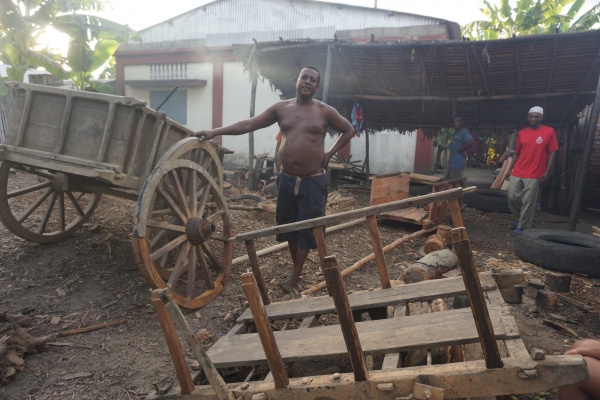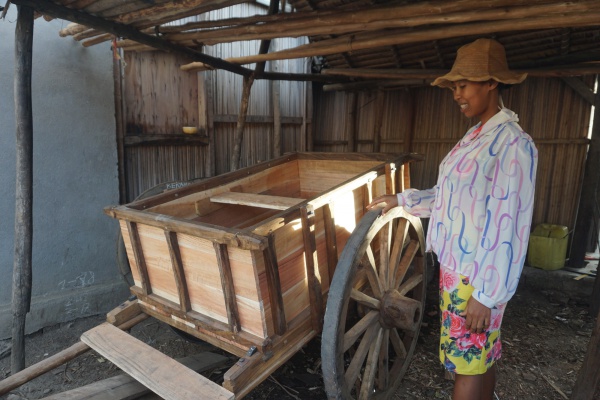Difference between revisions of "Zebu cart"
CampMaster (talk | contribs) (Tags: Mobile edit, Mobile web edit) |
CampMaster (talk | contribs) |
||
| Line 1: | Line 1: | ||
| − | ''' | + | '''It's sunrise in Sambirano. A small traffic jam has evolved at the bridge crossing in Ambanja, not by cars, but by zebu carts slowly making their way across the narrow bridge. The owners and passengers of these ox-powered vehicles, mostly farmers, would have started travelling in darkness to reach the central marketplace by the early morning hours to distribute their crops.''' |
<!-- | <!-- | ||
| + | |||
| + | By sunrise at the Sambirano crossing, a small traffic jam is caused by a convoy of zebu carts slowly rolling over the narrow bridge in Ambanja. The drivers of these ox-powered carts started their journey in the dark to reach the central marketplace in the early morning hours. | ||
| + | |||
It's early morning hours and the drivers of the ox-powered carts would have started in the dark. Just by sunrise at the crossing of the Sambirano bridge, there is rush hour and even a small traffic jam caused by carts slowly rolling across the narrow bridge on their way to the central marketplace to deliver their fresh seasonal crops from the countryside.''' | It's early morning hours and the drivers of the ox-powered carts would have started in the dark. Just by sunrise at the crossing of the Sambirano bridge, there is rush hour and even a small traffic jam caused by carts slowly rolling across the narrow bridge on their way to the central marketplace to deliver their fresh seasonal crops from the countryside.''' | ||
| Line 18: | Line 21: | ||
|} | |} | ||
| − | Zebu carts, or | + | Zebu carts, or charrettes à zebu as they are know, are common sights in and around Ambanja, the region, and across much of the country. |
[[File:Zebu_cart_067.jpg|600px]] | [[File:Zebu_cart_067.jpg|600px]] | ||
| − | Dozens of workshops in Ambanja produce zebu carts. One such workshop in the town centre is run by Mr Theodore, <!-- 032 49 341 77)--> who with his team of six skilled carpenters builds and assembles | + | Dozens of workshops in Ambanja produce zebu carts. One such workshop in the town centre is run by Mr Theodore, <!-- 032 49 341 77)--> who with his team of six skilled carpenters builds and assembles around 50 carts per year, all manually crafted without the use of electrical power tools. |
{| class="imageTable" | {| class="imageTable" | ||
| Line 43: | Line 46: | ||
[[File:Zebu_cart_009.jpg|600px]] | [[File:Zebu_cart_009.jpg|600px]] | ||
| − | The | + | The humble charrette remains as practical and relevant as they were hundreds of years ago in providing transport to farmers in distributing their seasonal harvests to marketplaces. |
[[File:Sambirano_078.jpg|600px]] | [[File:Sambirano_078.jpg|600px]] | ||
| − | The | + | The countless farmers who maintain the tradition all deserve an award for their collective contribution to keeping their carbon footprints close to zero. |
== Additional information == | == Additional information == | ||
Revision as of 03:07, 18 August 2024
It's sunrise in Sambirano. A small traffic jam has evolved at the bridge crossing in Ambanja, not by cars, but by zebu carts slowly making their way across the narrow bridge. The owners and passengers of these ox-powered vehicles, mostly farmers, would have started travelling in darkness to reach the central marketplace by the early morning hours to distribute their crops.
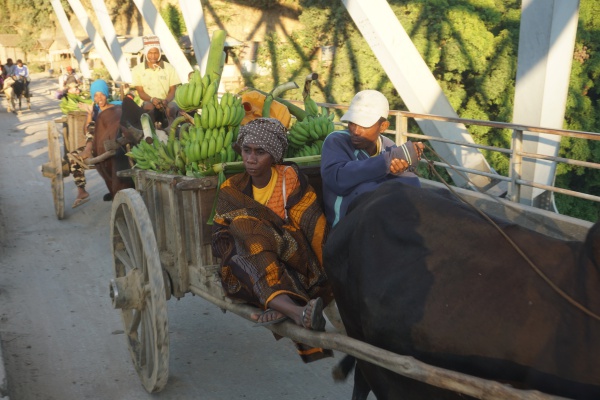
| ||
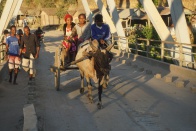
|

|

|
Zebu carts, or charrettes à zebu as they are know, are common sights in and around Ambanja, the region, and across much of the country.
Dozens of workshops in Ambanja produce zebu carts. One such workshop in the town centre is run by Mr Theodore, who with his team of six skilled carpenters builds and assembles around 50 carts per year, all manually crafted without the use of electrical power tools.
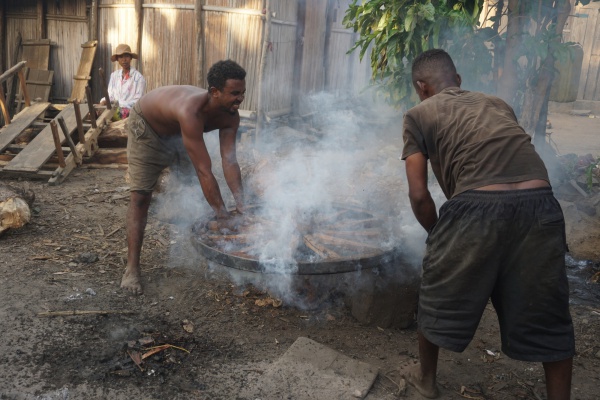
| ||
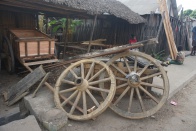
|
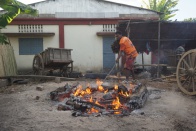
|
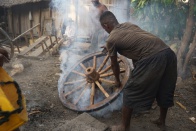
|

|
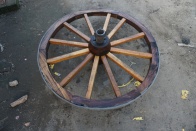
|
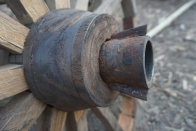
|
The design and model are always the same: A simple two-wheeler which easily attaches to one or more zebus. A cart takes about one week to make and costs 1,800,000 (USD 400).
The humble charrette remains as practical and relevant as they were hundreds of years ago in providing transport to farmers in distributing their seasonal harvests to marketplaces.
The countless farmers who maintain the tradition all deserve an award for their collective contribution to keeping their carbon footprints close to zero.
Additional information
View more Zebu cart photos
